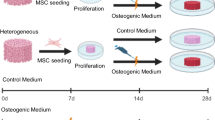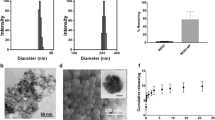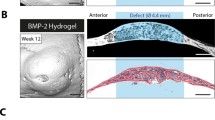Abstract
Changes in optical attenuation, relevant to cytochrome oxidase, of the rat bone periosteal tissue in explanted culture and human neuronal cells in three-dimensional agarose constructs have been monitored by the use of optical coherence tomography (OCT), with potential applications in tissue engineering and diagnosis. A superluminescent diode (SLD) with a peak emission wavelength (λ=820 nm) that is the near-infrared absorption band of the oxidized form of CytOx was employed. The attenuation coefficient was obtained from the depth-resolved reflectance profiles of liquid phantoms (naphthol green B with intralipid), explant culture (periosteum of calvaria from rats) and cells in 3D agarose constructs. The absorption coefficient of naphthol green B can be accurately quantified by the linear relationship between attenuation coefficients and the concentration. The difference in the attenuation coefficient of astrocytoma cells in agarose before and after reduction of CytOx is 0.26±0.10 mm−1 (n=9), whereas no attenuation is observed with the agarose control. Reduction of the enzyme in periosteal tissue leads to a change in attenuation coefficient of 0.43±0.24 mm−1 (n=7). For comparison, using a biochemical assay, the absorption coefficient of the oxidized-reduced form of CytOx is measured at approximately 8.3±1.5×10−3 mm−1 (n=4) and 8.7±2.5×10−3 mm−1 (n=4) at 820 nm for astrocytoma cells and rat periosteum, respectively. The lower value of CytOx concentration using biochemical versus OCT measurements may result from shifts in the scattering profile and the amplifying influences of multiple heme-based oxidases, indicating that conventional OCT is not specific enough to monitor redox changes in cytochrome oxidase. However, qualitative shifts in oxidation state are apparent using the technique. Our results suggest the potential application of OCT in providing high-resolution tomographic imaging of tissues in organ culture and cells grown in three-dimensional constructs in vitro.








Similar content being viewed by others
References
Brown GC, Crompton M, Wray S (1991) Cytochrome oxidase content of rat brain during development. Biochim Biophys Acta 1057:273–275
Delpy DT, Cope M (1997) Quantification in tissue near-infrared spectroscopy. Philos Trans R Soc London Ser B 352:649–659
Iizuka MN, Sherar MD, Vitkin AI (1999) Optical phantom materials for near infrared laser photocoagulation studies. Lasers Surgery Med 25:159–169
Jöbsis FF (1977) Noninvasive, infrared monitoring of cerebral and myocardial oxygen sufficiency and circulatory parameters. Science 198:1264–1267
Kiernan JA (1990) Histological & histochemical methods: theory & practice. Pergamon Press, Oxford, pp 258–287
Liu H, Beauvoit B, Kimura M, Chance B (1996) Dependence of tissue optical properties on solute-induced changes in refractive index and osmolarity. J Biomed Opt 1:200–211
Matcher SJ, Elwell CE, Cooper CE, Cope M, Delpy DT (1995) Performance comparison of several published tissue near-infrared spectroscopy algorithms. Anal Biochem 227:54–68
Morgner U, Drexler W, Kärtner FX, Li XD (2000) Spectroscopic optical coherence tomography. Opt Lett 25:111–113
Sathyam US, Colston BW, Da Silva LB, Everett MJ (1999) Evaluation of optical coherence quantitation of analytes in turbid media by use of two wavelengths. Appl Opt 38:2097–2104
Schmitt JM, Knüttel A, Bonner RF (1993a) Measurement of optical properties of biological tissues by low-coherence reflectometry. Appl Opt 32:6032–6042
Schmitt JM, Knüttel A, Gandjbakhche A, Bonner RF (1993b) Optical characterization of dense tissues using low-coherence interferometry. Proc SPIE 1889:197–211
Schmitt JM, Xiang SH, Yung KM (1998) Differential absorption imaging with optical coherence tomography. J Opt Soc Am A 15:2288–2296
Staveren HJ van, Moes CJM, Marle J van, Prahl SA, Gement JC van (1991) Light scattering in Intralipid-10% in the wavelength range of 400–1100 nm. Appl Opt 30:4507–4514
Tearney GJ, Brezinski ME, Bouma BE, Boppart SA, Fujimoto JG (1997) In vivo endoscopic optical biopsy with optical coherence tomography. Science 276:2037–2039
Thörnström PE, Brzezinski P, Fredriksson PO, Malmstrom BG (1988) Biochemistry 27:5441–5447
Tuchin V (2000) Tissue optics: light scattering methods and instruments for medical diagnosis. (Tutorial texts in optical engineering, vol 38) SPIE, Bellingham, Wash., USA
Tuchin VV, Xu X, Wang RK, (2002) Dynamic optical coherence tomography in studies of optical clearing, sedimentation and aggregation of immersed blood, Appl Opt 41:258–271
Tzagoloff A (1982) Mitochondria. Plenum Press, New York
Wang RK (1999) Resolution improved optical coherence-gated tomography for imaging through biological tissues. J Mod Opt 46:1905–1912
Wang RK (2000) Modelling optical properties of soft tissue by fractal distribution of scatters. J Mod Opt 47:103–120
Wang RK, Elder JB (2002a) High resolution tomographic imaging of soft biological tissues. Int J Laser Phys 12:17–22
Wang RK, Elder JB (2002b) Propylene glycol as a contrasting medium for optical coherence tomography to image gastrointestinal tissues. Lasers Surgery Med 30:201–208
Wang RK, Xu X, Tuchin VV, Elder JB (2001) Concurrent enhancement of imaging depth and contrast for optical coherence tomography by hyperosmotic agents, J Opt Soc Am B 18:948–953
Acknowledgements
This research was made possible with financial support from the EPSRC for the project GR/R52978 and GR/N13715, and from the European Union for the BITES project.
Author information
Authors and Affiliations
Corresponding author
Rights and permissions
About this article
Cite this article
Xu, X., Wang, R.K. & El Haj, A. Investigation of changes in optical attenuation of bone and neuronal cells in organ culture or three-dimensional constructs in vitro with optical coherence tomography: relevance to cytochrome oxidase monitoring. Eur Biophys J 32, 355–362 (2003). https://doi.org/10.1007/s00249-003-0285-z
Received:
Revised:
Accepted:
Published:
Issue Date:
DOI: https://doi.org/10.1007/s00249-003-0285-z




